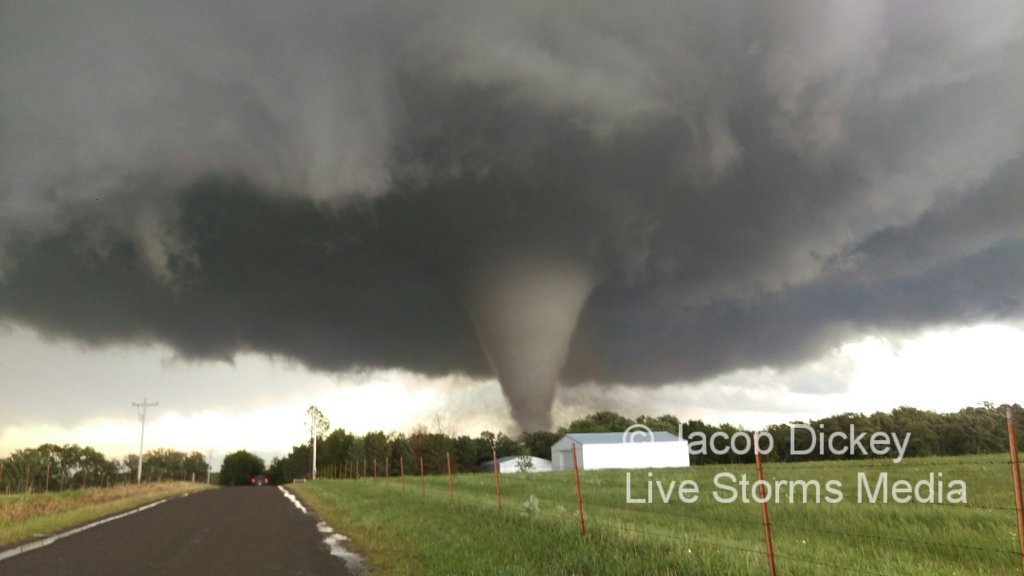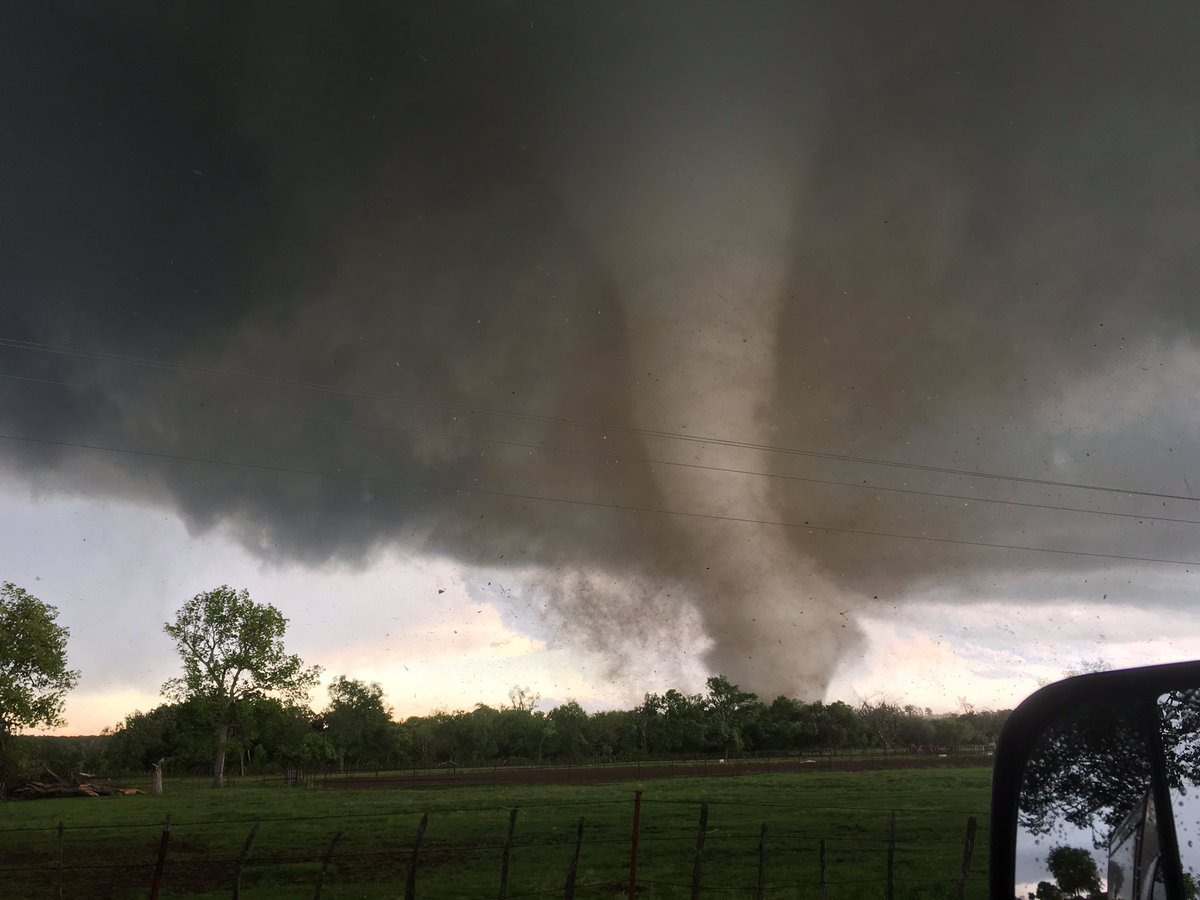WKN Weer, Klimaat en Natuurrampen
Lees alles over het onstuimige weer op onze planeet, volg orkanen en tornado's, zie hoe vulkanen uitbarsten en hoe Moeder Aarde beeft bij een aardbeving. Alles over de verwoestende kracht van onze planeet en tal van andere natuurverschijnselen.



Lekkere timing ook, zo aan het begin van het seizoen 
Had er volgens mij mee te maken dat ze aangeklaagd konden worden als er ergens slachtoffers vielen en ze geen waarschuwingen gaven met hun systeem. Muricaaaa sue sue sue
Had er volgens mij mee te maken dat ze aangeklaagd konden worden als er ergens slachtoffers vielen en ze geen waarschuwingen gaven met hun systeem. Muricaaaa sue sue sue
"Light thinks it travels faster than anything. It doesn't. For wherever light travels it finds darkness has got there first and is waiting for it."


Jammer, was een handige site om te gebruiken.
Ik las dat het te duur werd om te onderhouden. De laatste tijd had de site ook wel veel technische problemen.
Ik las dat het te duur werd om te onderhouden. De laatste tijd had de site ook wel veel technische problemen.
Wat gewoon is voor de spin, is chaos voor de vlieg.


twitter:ScienceByMaria twitterde op zondag 08-05-2016 om 04:55:51 VIDEO: Extreme close-range #Tornado touch down earlier this evening just north of Wray, CO! @reedtimmerTVN #cowx https://t.co/MNF3LT7Gqo reageer retweet


http://kfor.com/on-air/live-streaming/
http://weathernationtv.com/on_tv/?play=1
twitter:WxDeFlitch twitterde op maandag 09-05-2016 om 23:21:47 Tornado south of Wynnewood, OK #okwx 421 pm cdt https://t.co/mbxL7ES6r0 reageer retweet


Foto van het schadepad van de 'stovepipe' tornado:
Zo te zien bovenstaande foto de plek welke vanaf minuut 10 in onderstaande video te zien is waar de tornado de weg over lijkt te steken maar dan stuk terug gaat om z'n pad weer te vervolgen. Op de foto is te zien dat hij op dat moment precies tussen de 2 witte gebouwen door is gegaan.
Zo te zien bovenstaande foto de plek welke vanaf minuut 10 in onderstaande video te zien is waar de tornado de weg over lijkt te steken maar dan stuk terug gaat om z'n pad weer te vervolgen. Op de foto is te zien dat hij op dat moment precies tussen de 2 witte gebouwen door is gegaan.


Ik las vanochtend ergens dat de Sulphur tornado tegen de gebruikelijke draairichting in zou zijn geweest? Kan dat echter op dit filmpje niet verifiėren


Bizar om die curve zo te zien...zo onvoorspelbaar kan het dus zijnquote:Op woensdag 11 mei 2016 11:08 schreef mouzzer het volgende:
Foto van het schadepad van de 'stovepipe' tornado:
[ afbeelding ]
Zo te zien bovenstaande foto de plek welke vanaf minuut 10 in onderstaande video te zien is waar de tornado de weg over lijkt te steken maar dan stuk terug gaat om z'n pad weer te vervolgen. Op de foto is te zien dat hij op dat moment precies tussen de 2 witte gebouwen door is gegaan.


Ik begreep dat er een "satelite"-tornado rond dat systeem hing. En die zou dan tegen de gebruikelijke richting draaien. Maar vaak zijn die satelites veel zwakker en wordt er minder op gelet.quote:Op woensdag 11 mei 2016 16:14 schreef Frutsel het volgende:
Ik las vanochtend ergens dat de Sulphur tornado tegen de gebruikelijke draairichting in zou zijn geweest? Kan dat echter op dit filmpje niet verifiėren
Hier onder een video die het proces kort en bondig uitlegt (rest van de video is ook ZEER interessant).


Thx !quote:Op woensdag 11 mei 2016 18:56 schreef i2Them2 het volgende:
[..]
Ik begreep dat er een "satelite"-tornado rond dat systeem hing. En die zou dan tegen de gebruikelijke richting draaien. Maar vaak zijn die satelites veel zwakker en wordt er minder op gelet.
Hier onder een video die het proces kort en bondig uitlegt (rest van de video is ook ZEER interessant).


quote:An Oklahoma Tornado Rewrites the Rule Book
Overshadowed by the mighty EF4 and EF3 tornadoes that tore across south-central Oklahoma last Monday, May 9, another less damaging twister--from the same thunderstorm--has left seasoned scientists both astonished and fascinated. This tornado, which struck near Roff, OK, was rated an unexceptional EF1 on the Enhanced Fujita Tornado Damage Scale. However, the Roff tornado stands out in several other ways.
—It was an anticyclonic tornado, meaning that it rotated clockwise rather than counterclockwise. A few such twisters probably occur each year, but they account for only perhaps 1% of all U.S. tornadoes—and that’s a very rough estimate, according to tornado climatology expert Harold Brooks (NOAA National Severe Storms Laboratory). In fact, the Storm Data procedures maintained by NOAA include no specific requirement or methodology for reporting whether or not a tornado is anticyclonic.
—It developed in the “forward flank” part of the storm, enveloped in rain-cooled air. “This is the first time I’ve ever heard of a well-developed anticyclonic tornado buried inside the forward-flank core,” said Roger Edwards (NOAA Storm Prediction Center), who has predicted and observed tornadoes for more than 25 years.
—Its damage path was initially estimated to be as much as 13 miles long, as documented in a preliminary storm survey conducted by the National Weather Service in Norman, OK. If confirmed, this path length will likely be a record; I have been unable to find evidence of any other anticyclonic tornado with a path this long. The estimated duration of 35 minutes might also end up as a record-setter for anticyclonic tornadoes. However, reanalysis of the damage could reduce the estimated path length and duration, as the radar signature of the tornado was shorter-lived, according to Gabriel Garfield (University of Oklahoma/CIMMS/NWS), who participated in the storm survey.
he scarcity of anticyclonic tornadoes is not a direct result of the Coriolis effect, which makes tropical cyclones spin cyclonically. The Coriolis force actually has little direct influence on circulations as small as tornadoes (not to mention toilets or other drains that happen to cross the equator). What appears to be the main driver is the wind shear that produces rotating supercell thunderstorms. In the Northern Hemisphere, a blossoming supercell will often split in two, with one cell angling to the right of the mean upper-level wind, spinning cyclonically, and the other angling leftward and rotating anticyclonically. Rightward-moving, cyclonically-spinning cells are the ones better positioned to ingest warm, moist air and grow more vigorously. Thus, most tornadoes are cyclonic, spawned by mesocyclones within cyclonically rotating supercells. (This Wikipedia page includes a nice conceptual diagram of a supercell thunderstorm.) Toward the outer edge of a storm's rear-flank gust front, there can be anticyclonically rotating features; very rarely, one of these will spin up an anticyclonic twister.
What happened in Oklahoma last week doesn't quite fit the classic picture: the anticyclonic Roff tornado developed right in the rain-cooled heart of the storm rather than on its periphery. The Roff tornado was embedded in rain for most or all of its lifespan. "We saw no evidence of it in the gray murk of heavy rain to our [west], nor any suspicious wind shifts," reported Edwards, who was on the same storm photographing the nearby Sulphur tornado. As for what caused the anticyclonic Roff tornado, "we can offer only speculation and conjecture at this point," said Edwards in a blog post. The smoking gun could end up being a stray left-moving storm, evident on radar, that zipped northward and became embedded in the larger, stronger supercell that produced the Roff and Sulphur tornadoes. It's conceivable that this left-moving cell injected some anticyclonic spin into the forward flank of the storm.
Deducing what happened will take some doing, as this storm was more than 50 miles from the Oklahoma City NEXRAD radar. Data from mobile radar, including the RaXPol unit operated by Howard Bluestein and colleagues (University of Oklahoma), may shed some light on the oddly positioned Roff twister. "Having a tornado in that location is worrisome for my team," said Doppler on Wheels chief scientist Joshua Wurman in an email, "because we count on being able to transect cores safely. That's not where we expect to find danger."
Edwards mused: "The odds are extraordinarily tiny of ever seeing another anticyclonic tornado entombed in the forward-flank core of even a violently tornadic supercell. Yet now we know it's possible, and we must be vigilant of that."
Some clockwise pioneers
There are extremely rare cases where a left-moving, anticyclonically rotating thunderstorm generates an "anti-mesocyclone" that spawns an anticyclonic twister, as occurred near Sunnyvale, CA, on May 4, 1998. However, the best-known examples of anticyclonic twisters occur in conjunction with more powerful cyclonic twisters as part of a single supercell thunderstorm, as was the case in Oklahoma last week. Sometimes these are weak, short-lived satellite twisters very close to the companion cyclonic tornado; others are stronger and more separated. Wurman unraveled DOW data for several of these in a 2013 Weather Analysis and Forecasting paper. "Our paper does not include any observations of [forward-flank] anticyclonic tornadoes, so this current one is certainly an outlier," Wurman told me.
One classic case--probably the first anticyclonic tornado ever filmed--unfolded just west of Ames, IA, on June 13, 1976. In this storm, a powerful F3 anticyclonic tornado (the strongest anticyclonic tornado documented to date) closely paralleled the path of an F5 that ripped through the town of Jordan and the nearby countryside. The twisters were only about a mile apart as they moved largely in sync (see Figure 3). The YouTube clip at bottom shows both tornadoes.
A few years later, Ted Fujita and Roger Wakimoto examined the mammoth, nearly stationary supercell that tormented Grand Island, NE, for nearly three hours on June 3, 1980. (This is the storm that inspired the book and movie "Night of the Twisters"). Of the seven tornadoes that emerged that night, three were found to be anticyclonic. "This storm produced the most complex damage patterns imaginable," wrote James McDonald (Texas Tech University) in the Bulletin of the American Meteorological Society. "No one but Ted Fujita could have sorted them out."


Ten zuiden van Dodge City, Kansastwitter:islivingston twitterde op woensdag 25-05-2016 om 01:32:34 Omg https://t.co/4MOIwdb93q reageer retweet


LIVE NU@ http://www.wfaa.com/news/wfaa-breaking-news/32629471
Erg mooie beelden. Hij komt wel erg dichtbij..
Erg mooie beelden. Hij komt wel erg dichtbij..
Een oplettende kijker (volgens Mediacourant 15-4-20).

 VIDEO: Extreme close-range
VIDEO: Extreme close-range 


 Tornado south of Wynnewood, OK
Tornado south of Wynnewood, OK 






 Op
Op 











 Omg
Omg